#Tom DiCillo
Explore tagged Tumblr posts
Photo










Stranger Than Paradise (Jim Jarmusch, 1984).
67 notes
·
View notes
Text




Delirious (2006) - Tom DiCillo
You sit around waiting for someone else to tell you you're okay.
#delirious#delirious film 2006#tom dicillo#michael pitt#steve buscemi#gina gershon#alison lohman#film#film still#watched in st louis#watched in november 2024#criterion channel
11 notes
·
View notes
Text

Steve Buscemi in Tom DiCillo's (great) movie Living in Oblivion.
68 notes
·
View notes
Text

Happy 71st, Tom DiCillo.
7 notes
·
View notes
Text







Coffee and Cigarettes (2003), dir. Jim Jarmusch, Part 1/11
"Nice to meet you too. In a way."
#i decided to do screencaps for each of the segments#they all deserve love and appreciation <3#coffee and cigarettes#jim jarmusch#roberto benigni#steven wright#tom dicillo#movie screencaps
9 notes
·
View notes
Text

Steve Buscemi and Michael Pitt in Delirious (Tom DiCillo, 2006)
Cast: Steve Buscemi, Michael Pitt, Alison Lohman, Gina Gershon, Kevin Corrigan, Richard Short, Elvis Costello. Screenplay: Tom DiCillo. Cinematography: Frank G. DeMarco. Production design: Teresa Mastropierro. Film editing: Paul Zucker. Music: Anton Sanko.
Celebrity is a broad target for satire, but writer-director Tom DiCillo finds the right weapon for hitting it: He makes his protagonist a paparazzo named Les Galantine, played by Steve Buscemi with his usual high-strung, terrier-like intensity and vulnerability. Trying one day to shove aside the other paparazzi and get the right picture of the latest pop music phenomenon, K'Harma (Alison Lohman), Les encounters a homeless kid named Toby (Michael Pitt), hanging around the fringes of the shoot. With his usual impulsive bark-is-worse-than-his-bite manner, Les at first abuses the kid, and then lets him crash in his apartment. Toby is sweet but a little dim: When Les explains that every paparazzo is in search of "the shot heard around the world," the photo that will make his reputation, Toby clearly doesn't know the origin of the phrase. Still, when he proves useful in capturing a shot of a celebrity who has just had surgery on his penis, Les empties a closet for Toby to use as a bedroom and makes him his unpaid assistant. But gradually the dynamic between the two shifts: K'Harma had noticed the good-looking Toby, who wants to be an actor, and so does a casting director (Gina Gershon) when he tags along with Les at a celebrity event. Before long, it's Toby whom the paparazzi are pursuing, much to Les's fury. DiCillo keeps the satire well within the confines of his story, and his actors never let it overwhelm the characterization of Les and Toby and K'Harma.
2 notes
·
View notes
Text
youtube
2 notes
·
View notes
Text






when you're strange: a film about the doors (2009) dir. tom dicillo
24 notes
·
View notes
Text

Alison Lohman in Delirious, dir. Tom DiCillo (2006)
47 notes
·
View notes
Text
Robinson’s Garden (1987)


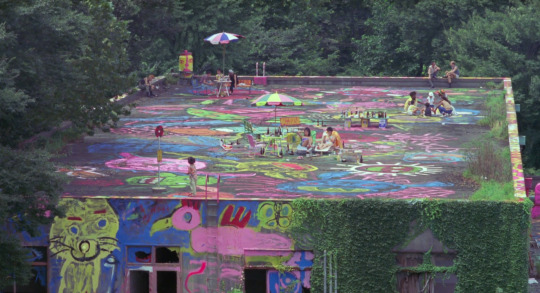



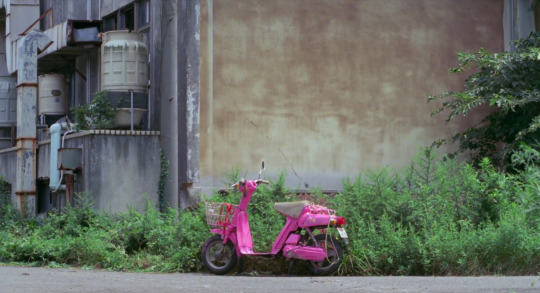

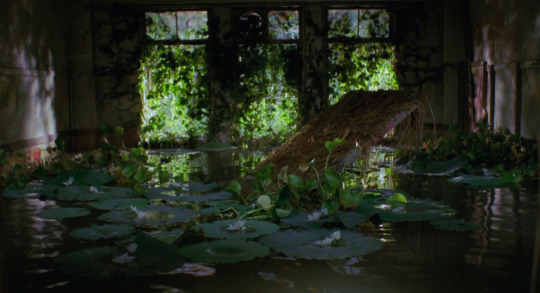
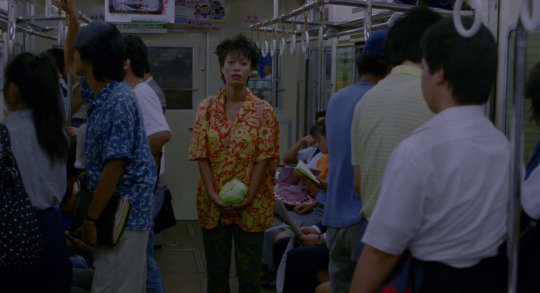
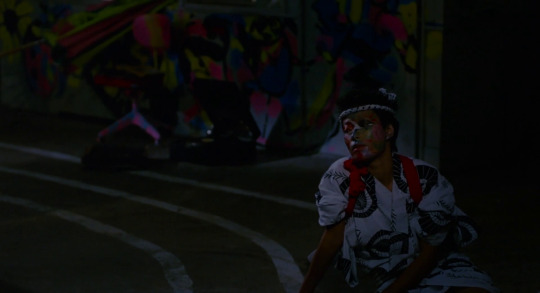
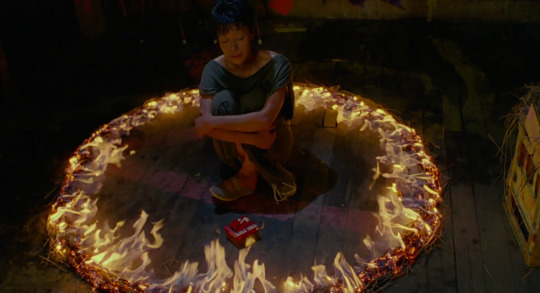
ロビンソンの庭 Robinson’s Garden (1987) directed by Masashi Yamamoto cinematography by Tom DiCillo
#ロビンソンの庭#robinson’s garden#masashi yamamoto#japanese cinema#japanese film#avantgarde#asian film#punk#beautiful chaos#kumiko ota#stills#japanese movies
51 notes
·
View notes
Text
Variety
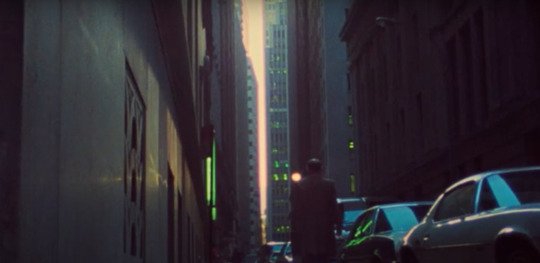
Director Bette Gordon Stars Sandy McLeod, Luís Guzman, Nan Goldin USA/West Germany/UK 1983 Language English 1hr 40mins Colour
Weird but absorbing indie noir
What kind of film is this? When it begins with a conversation between Christine (Sandy McLeod) and Nan (Nan Goldin) in a locker room, it feels like this could be an early example of the young-woman-trying-to-do-something-arty-in-NYC-and-struggling microgenre, and that would be fine. Instead, a rather weirder plot is set in play when Christine surprises her friend by saying she would take the one job that Nan knows is available: working the ticket booth at the Variety, a cinema that shows dirty movies.

Christine initially seems pleased with the job, but it seems to have some unsettling effects on her. During conversations in public places with her earnest, somewhat uptight boyfriend Mark (Will Patton), she’ll break into long monologues describing erotic scenarios.
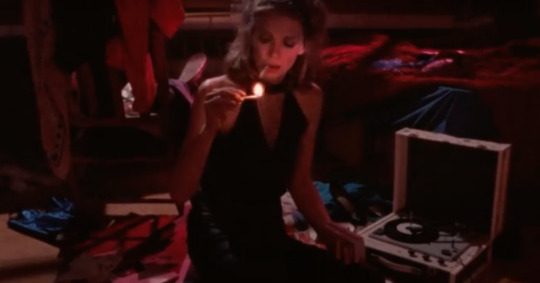
Then she starts following the besuited middle-aged regular at the Variety who has invited her out. It’s clear he’s involved in dodgy stuff, which might be connected with the corrupt fisherman’s union Mark is doing an investigative report about. Less clear is what Christine is up to, and whether she grasps how much danger she might be in.
Contrasting with the thriller elements are scenes in the bar where Nan works, with groups of women just talking about their lives.
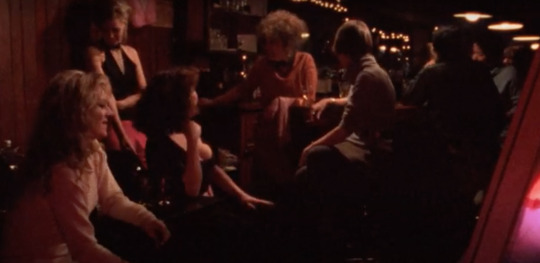
So what we’ve got is part offbeat noir, part psychological drama and part slice of life. I’m not sure all of that fully gels, and there were occasionally bits where I thought I had missed something but the film works nonetheless.
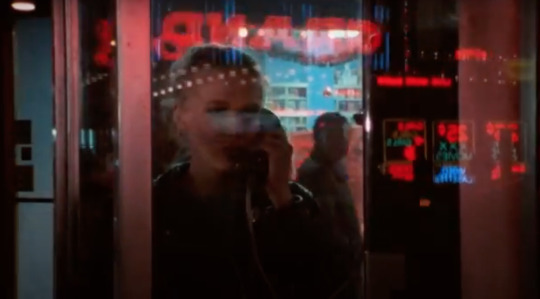
I think the thriller elements are surprisingly effective (some other reviews seem to disagree). Like the film as a whole, they gained from being shot in the real world. We get the assorted filth-industry locations of the type so carefully recreated in the David Simon series The Deuce, but these are actual working peep shows etc. We also get the crumbling boardwalk at Asbury Park, a huge fish market and even Yankee Stadium (I was wondering if they had permission to film there or somehow snuck a camera in - not easy to do with the equipment they had in those days.)
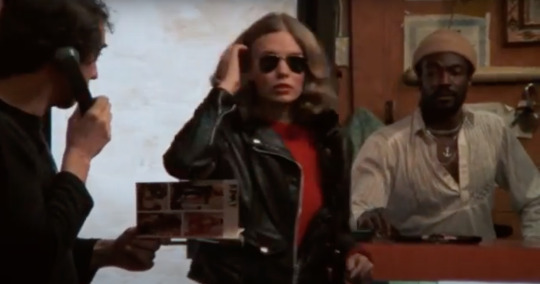
There’s an interesting mix of folks involved, some then experiencing their moment, some whose time would come later. Writer Kathy Acker – whose work was daring or notorious, depending on your perspective – gets a script credit. I don’t generally like a sax-driven score, but this one is excellent – it’s by John Lurie, who around the same time was starring in Jim Jarmusch’s breakthrough Stranger Than Paradise, which was shot by Tom DiCillo, who (yes) was one of the cinematographers on Variety.
There are a couple of character actors making early appearances here who are still busy in the 2020s. I’ve already mentioned Will Patton – the other one is Luís Guzmán, who plays Christine’s co-worker at the cinema. I’m here to report that Guzmán arrived in the movies fully formed – to say he’s easily recognisable in Variety is an understatement.
But I’m guessing it’s Goldin’s presence that meant I could see this in a cinema in 2023. Clips from Variety appear in All The Beauty And All The Bloodshed, the recent critically beloved documentary about Goldin’s life and work. She seems to be playing herself: the character is called Nan, she’s a photographer and she works in a bar, as Goldin did at the time. (I'm assuming the bar she worked at and the one in the movie are the same place, but don't know that for sure.)

Variety had a slightly strange origin – Bette Gordon was an underground New York-based film-maker offered a chance to make a bigger film by a German TV channel (Britain’s recently established Channel 4 contributed too). Gordon came up with idea and asked Acker to write it – but three other people get a credit for the screenplay and I think I can guess which bits are left from Acker’s draft.
It’s very much a snapshot of a moment in early 1980s New York, but it’s also an involving and fascinating movie. I like it a lot.
4 notes
·
View notes
Text

Movie still from Tom DiCillo's Box of Moonlight (1996).
5 notes
·
View notes
Text

Happy 70th, Tom DiCillo.
With Catherine Keener on the set of Living in Oblivion (1995).
5 notes
·
View notes
Photo
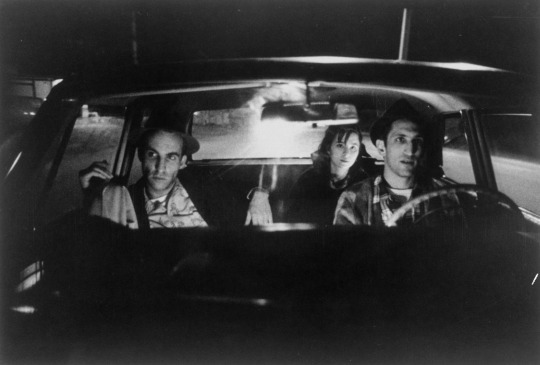
Richard Edson, Eszter Balint, and John Lurie in Stranger Than Paradise (Jim Jarmusch, 1984)
Cast: John Lurie, Eszter Balint, Richard Edson, Cecillia Stark, Danny Rosen, Rammellzee, Tom DiCillo, Richard Boes, Rockets Redglare, Harvey Perr, Brian J. Burchill, Sara Driver, Paul Sloane. Screenplay: Jim Jarmusch. Cinematography: Tom DiCillo. Production design: Matt Buchwald, Sam Edwards, Louis Tancredi, Stephen Torton. Film editing: Jim Jarmusch, Melody London. Music: John Lurie.
Like a botanist discovering rare plants pushing through cracked pavement and a littered vacant lot, writer-director Jim Jarmusch finds curiously indomitable life forms in the back streets of ungentrified New York, the frozen outskirts of Cleveland, and the parts of coastal Florida that tourists speed through on their way to Orlando or Miami. And he presents them to us in a film with a beautifully eccentric rhythm to it. Stranger Than Paradise is composed of 67 single takes grouped into three sections: "The New World," in which Eva (Eszter Balint) arrives from Budapest to stay with her cousin Willie (John Lurie) in his ratty one-room New York apartment; "One Year Later," in which Willie and his friend Eddie (Richard Edson) drive to wintry Cleveland, where Eva has gone to live with her Aunt Lotte (Cecillia Stark); and "Paradise," in which Willie, Eddie, and Eva go to Florida. To say that nothing happens in the film isn't entirely incorrect, especially in the New York and Cleveland sections, in which Willie and Eddie spend most of their time playing cards, smoking, and generally getting on each other's nerves, as well as Eva's. In Florida, they lose money gambling, win it back, and Eva accidentally strikes it rich when she's mistaken for a drug runner's bagman. Yet it's the blackout structure of the film that gives it the illusion of a plot, or at least forward motion. Once you catch its rhythm, you may find yourself, as I did, eagerly anticipating the way in which Jarmusch will end each scene. He rarely does it with a gag or a punchline, but somehow in ways that make each scene feel like a kind of epiphany. In one of the longest sequences, we do nothing but watch the three major characters, plus Eva's boyfriend Billy (Danny Rosen), as they sit in a Cleveland theater watching a movie that, because it has no dialogue but is punctuated with various grunts, seems to be a kung fu film. Billy, who we learn has bought the tickets for everyone, is walled off from Eva by Eddie and Willie, who sit on either side of her, and when he passes the popcorn to Eva, Eddie takes a big handful. We learn more about these characters from this wordless sequence than we do from some of the film's expository dialogue. Tom DiCillo's black-and-white cinematography makes the most of the locations that were chosen for their blandness, bleakness, drabness, or, in the case of the frozen, snow-covered Lake Erie, emptiness. The soundtrack, composed for string quartet by Lurie, is supplemented by Screamin' Jay Hawkins's "I Put a Spell on You," a foreshadowing of Hawkins's appearance in Jarmusch's Mystery Train (1989).
21 notes
·
View notes

